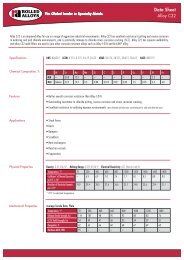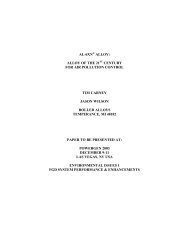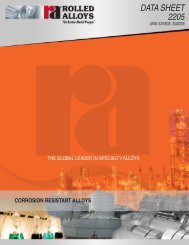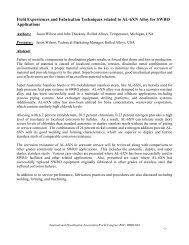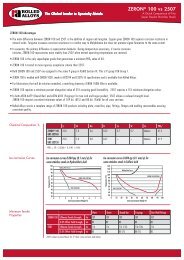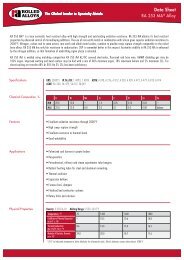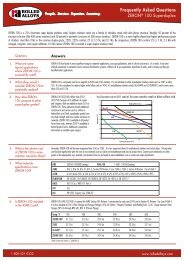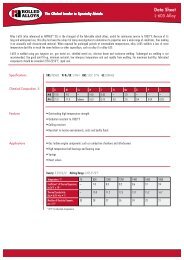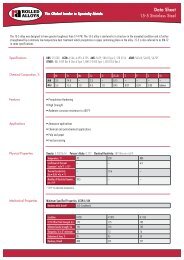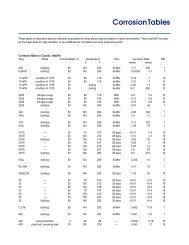Molten Metals [Heat Resistant Alloys (Environments)] - Rolled Alloys
Molten Metals [Heat Resistant Alloys (Environments)] - Rolled Alloys
Molten Metals [Heat Resistant Alloys (Environments)] - Rolled Alloys
You also want an ePaper? Increase the reach of your titles
YUMPU automatically turns print PDFs into web optimized ePapers that Google loves.
<strong>Molten</strong> <strong>Metals</strong>, Copper, continued<br />
Microstructure of cracked area<br />
above.<br />
Note copper alloy penetration into<br />
the RA 253 MA base metal. Grey<br />
phase at left is oxide.<br />
RA330 sintering muffle cracked by molten bronze<br />
After five RA330 muffles used for sintering powdered iron had failed, we were asked to<br />
look at one of them. Cracks as much as a foot long had developed in the sides. This muffle<br />
was intended only for powdered iron sintering. The presence of about an ounce of bronze<br />
coming out of this crack indicated that some bronze bearings had inadvertently been<br />
sintered in the same muffle. When a few bearings or bearing powder accumulated in the<br />
muffle, it melted when it was used for iron parts. Iron is sintered above 2000°F (1150°C),<br />
bearing bronze melts perhaps 1850°F (1010°C).<br />
Lead—molten lead heat treating baths, or lead pans, are fabricated of mild steel, RA309,<br />
RA310, RA 253 MA and sometimes RA330. The lead itself isn’t terribly corrosive to these<br />
alloys, although the lower nickel grades may be preferable. Alloy 600 is another matter--<br />
this high nickel alloy is dissolved by molten lead.


![Molten Metals [Heat Resistant Alloys (Environments)] - Rolled Alloys](https://img.yumpu.com/37021840/4/500x640/molten-metals-heat-resistant-alloys-environments-rolled-alloys.jpg)
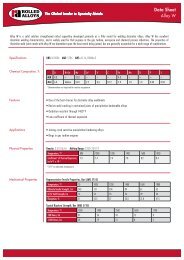
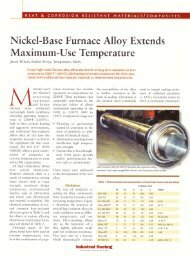
![RA333 Data Sheet [Heat Resistant Alloys] - Rolled Alloys](https://img.yumpu.com/50335849/1/190x245/ra333-data-sheet-heat-resistant-alloys-rolled-alloys.jpg?quality=85)
